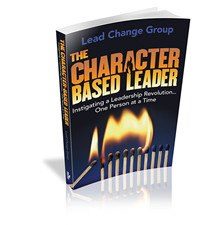 This post is part of the Leadership Opportunity Fest Blog Tour, hosted by Bill Treasurer. Watch the Leadership Opportunity Fest webinar here, find his book on Amazon, and then join us for the blog tour on August 13th as we celebrate leaders who open doors.
This post is part of the Leadership Opportunity Fest Blog Tour, hosted by Bill Treasurer. Watch the Leadership Opportunity Fest webinar here, find his book on Amazon, and then join us for the blog tour on August 13th as we celebrate leaders who open doors.

The title of the book came from a lesson Bill learned from his pre-school aged son Ian, when he proudly proclaimed he had been the leader for the day. When Bill asked what that meant, Ian proudly shared, “I got to open doors for people.”
The purpose of the Leadership Opportunity Fest Blog Tour is to celebrate leaders that opened doors for others. My story first appeared on SmartBlog for Leadership titled Diamonds in the Rough: How to recognize Star Employees…
Many years ago, a customer wrote a letter about me to my regional manager. To this day, I don’t know what prompted him to write the letter, and I don’t remember everything that it said, but I do remember that he called me “a diamond in the rough.”
While he saw potential, my focus was on all of my rough edges. I had recently transitioned from nonprofits and small businesses to my first job in corporate America. The processes, the language, the attire, the politics and the overall environment were so different so that, as thrilled as I was to be there, I was also intimidated and afraid that my knowledge and ideas were too simple and too child-like to be worthy.
What is interesting to me today is that the customer who wrote the note was an incredibly successful and busy CEO. In spite of his schedule, he intentionally chose to invest his time in both me and in the organization I worked for by writing that note.
The reason I share this story is that since then, I’ve frequently asked executives and hiring managers what their biggest challenge is. At least 90% of the time I get the same answer: “People.” That comment is quickly followed by an explanation about how hard it is to find enough qualified and caring people to do the work.
So here’s the challenge, if polished gems don’t grow on trees: How and where do you find them? Taking a lesson from Marcus Buckingham and Curt Coffma’s Strengths Finder Research, and the CEO I mentioned earlier, you invest your time and mine for them.
Consider these true stories.
A vibrant, outgoing skilled woman has a position doing routine clerical work. Her people skills are not challenged; her ability to problem solve is not challenged, and her desire to have fun at work is not understood. She is undervalued and treated like an ugly duckling. When she is transferred to another department where her natural strengths are unleashed, she increases customer satisfaction and key metrics by several percentage points. She is suddenly a swan!
A woman works for a large organization in a department where she is considered to be the top performer. Her manager consistently praises her performance, her attitude and her work ethic. When she is asked to transfer to another department, her new manager has nothing good to say about her. When she is transferred a third time, she is once again recognized as a top performer.
A 30-year-old bartender applies for an entry-level corporate position. He is extremely late for the interview and visibly shaken. Upon meeting the candidate, it is clear that he has a passion for people and for service; he is a deep thinker, with a sense of humor; he’s technologically savvy and looking to make a long-term career move. Prior to the interview, he encountered several uncontrollable circumstances that made it impossible for him to arrive on time or to communicate what was transpiring. The ultimate decision to hire him proves to be one of the best hiring decisions the manager ever makes. He becomes a highly valued, long-term employee that increases teamwork, customer satisfaction and revenue for the organization.
A woman enters a convenience store and engages in a conversation with a homeless man. Eventually the man reveals that they were former classmates. As they continue their conversation, she learns that he is highly educated, had a great career, a home and a family — before he started using drugs and lost it all. She sees a diamond where others only see rough. She offers him compassion and accountability, and he is transforming. (Credit for this story to Teri Aulph)
Think about those you work with every day. Are they diamonds in the rough that are simply being ignored or overlooked?
Think about the applicants you are interviewing for your open position. Do they have the passion and talent and just need to learn your industry?
What if a diamond in the rough could bring your organization a fresh perspective and ideas that increased customer satisfaction, teamwork, efficiency, employee retention or profitability?
The diamonds are there, just waiting to be discovered:
- Employees who already work for your organization.
- Heroes who are transitioning out of the military and into the civilian workplace.
- People who realize they are in dead-end jobs.
- People who have been laid off.
- People who are disabled.
- People coming out of recovery programs and are in need of a second chance.
Leaders that open doors are treasure hunters. Are you ready for a treasure hunt?
Image Credit: iStock Photo




I love this blog for many reasons. To write them all would fill a book and you would be exhausted reading them. I have memories clinging to some of the stories you told. Have you read the book Lean In by Sheryl Sandberg? In it she describes a friend of hers who wanted to work with her, I believe it was when Sheryl was at Google. Her friend didn’t follow the tired and worn out pattern when she applied for work. She asked Sheryl what problem do you have that I can solve? How I wish I had that courage! She got the job and years later she was still there but in an even greater capacity. This post reminds me of that book.